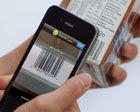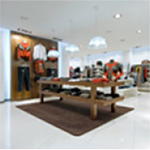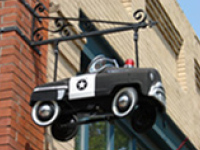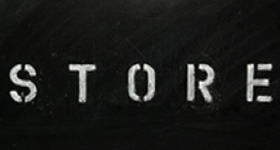 Recently I was asked to provide my thoughts on the future of supermarket shelving for for Progressive Grocer Magazine. A topic I'm very familiar with as both a designer and the head food shopper in my household. Here are my thoughts:
Recently I was asked to provide my thoughts on the future of supermarket shelving for for Progressive Grocer Magazine. A topic I'm very familiar with as both a designer and the head food shopper in my household. Here are my thoughts:
Who are some of your supermarket customers?
My client’s are not large supermarkets. We tend to develop relationships with smaller food purveyors in more of a boutique format.
Over the years these have included wine shops, convenience stores, candy shops, corner markets and health food shops. Budgets are typically tight, shelving is important but no less critical then the other design elements including lighting, traffic patterns, graphics and overall merchandising.
What do you consider the most significant recent innovations in supermarket shelving systems and what do you see as the future of supermarket shelving systems?
Shelving design changes at a snails pace and many of the designs I see today were being used by my Grandfather and my father years ago. It’s simply the past becoming the future. That being said it’s technology that will be the current litmus test for shelving. Customers are rapidly becoming more conscious of just what they are putting in their stomach. Nutrional information will be just as
important as price. Innovative ways to cook food will be of interest to prospective shoppers. Information about genetically engineered food will be required by the government The end result will be that the progressive grocer will look for ways to incorporate information technologies in to their shelving systems. Small digital signs, videos, automatic e mailings of information with the scan of a store card, will all trump reading the label on the food can.
What competitive advantages are achieved by cutting edge shelving systems?
The technology issues when combined with great product, competitive prices, excellent service and great store design will provide both large and small merchants with an advantage that will draw customers and increase loyalty. Those that don’t embrace at least some elements of that technology will fall behind. Certainly some of the boutique operations can retain a “General Store” vibe that will be appreciated by some, however, for the large scale grocer they won’t have that option.
What are your most popular supermarket shelving systems and how do you account for this popularity?
Current shelving trends seem to be following one of two formats. Either the use of standard steel shelves with pegboard backs or wooden shelving units with traditional theming details including crown molding, built in lighting and specialty detailing. In many stores the two types of shelving units are being combined based on the product being sold and the overall theming of the store. The standard steel units are popular because they work well and are very inexpensive.
We live in a digital world. We can shop from home and have our groceries delivered. Wood shelving displays are becoming more popular because customers want to feel comfortable in their shopping experience. Why buy coffee for twice as much at Starbucks then what we can pay at the local gas station. To some degree, because of the decor. Wood detailing, great graphics, warm colors, all tend to enhance the shoppers experience.





